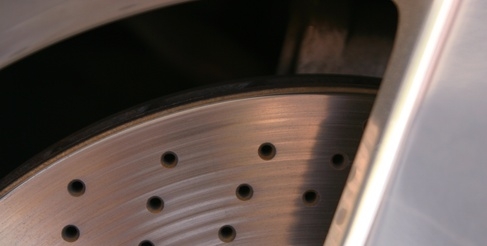
Having your car's brakes fail is a terrifying experience, leaving you with precious few ways of bringing your car to a safe stop. Modern safety systems are designed for a warning light to come on when there is a problem with the brake fluid, but there are also a few other physical symptoms you can check for. The brakes will seem slow to react, the brake pedal will feel mushy and there may be hydraulic fluid leaking under the car. Checking for where the leak is coming from is quite simple, but fixing the problem can be rather expensive.
Park your car in a safe place and lift up the hood of the car.
Check the hydraulic fluid levels in the master cylinder near the firewall of the car. There should be a maximum and a minimum level marked on it. If it is below the minimum you have a leak somewhere in the car, if not there is a problem with the brakes themselves.
Examine around the cylinder and surrounding components for signs of fluid leaking from the cylinder itself.
Check the metal lines running from the cylinder to each brake for any oily liquids on the line or dripping underneath the car. Repeat this for all four brakes.
Pay special attention to the rubber hoses and connectors where the metal brake line joins the brake system. This is the most common place to find leaks.